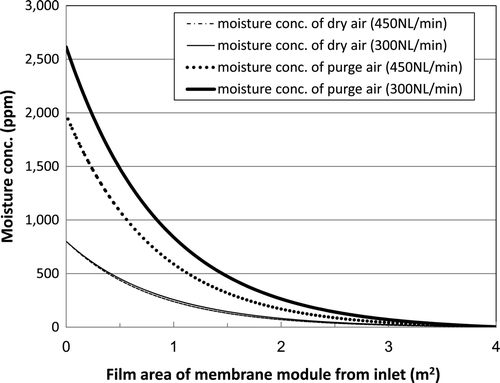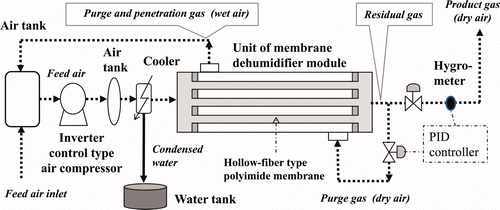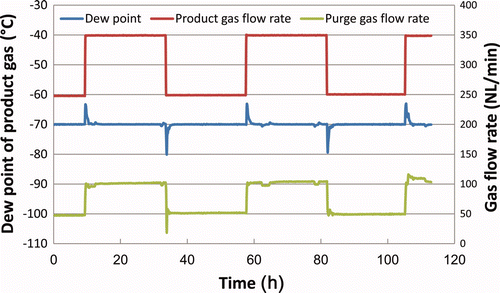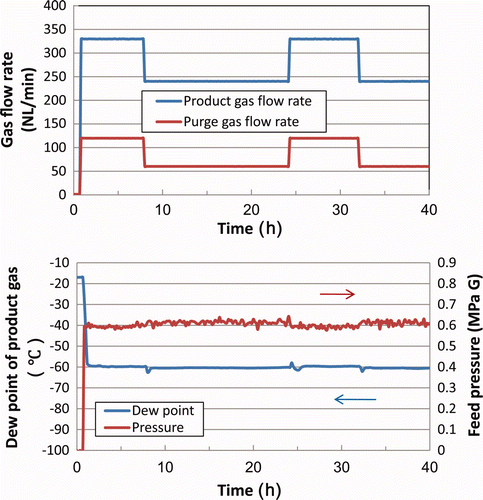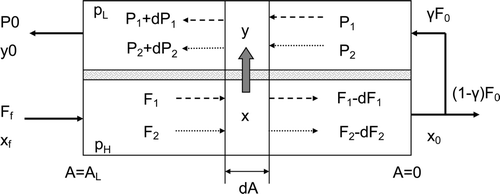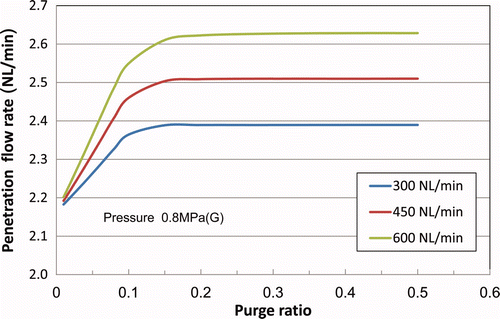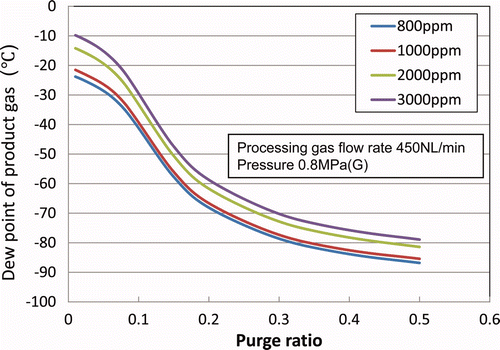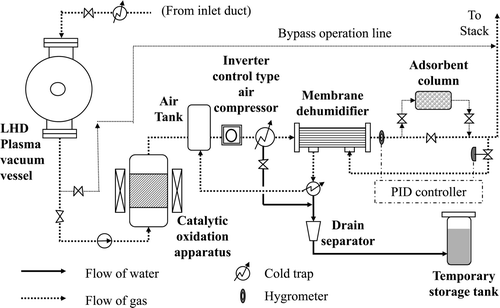Figures & data
Table 1. Operating conditions.
Figure 3. Transitional change of the dew point under fixed purge ratio operation at (1) 0.6 MPa(G) and (2) 0.8 MPa(G).
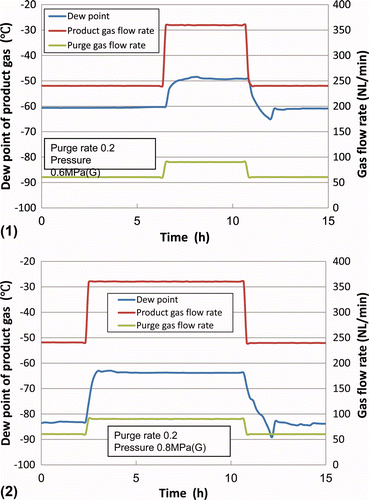
Figure 5. Detailed transitional change of the dew point upon an increase in purge gas flow rate (1) with overshooting and (2) without overshooting.
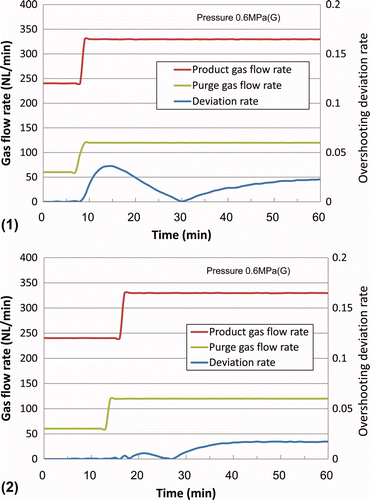
Figure 6. Detailed transitional change of the dew point upon an increase in purge gas flow rate (1) with undershooting and (2) without undershooting.
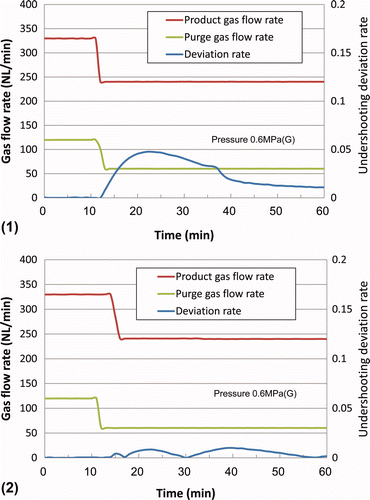
Figure 8. Relationship between dew point and purge ratio at (1) 0.6 MPa(G), (2) 0.7 MPa(G), and (3) 0.8 MPa(G).
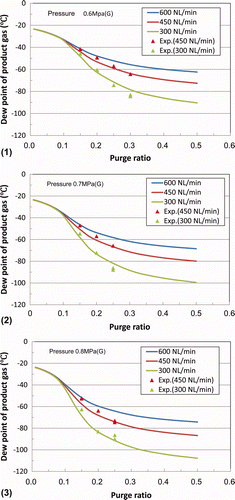
Figure 10. Relationship between moisture recovery ratio and purge ratio at (1) 0.6 MPa(G), (2) 0.7 MPa(G), and (3) 0.8 MPa(G).
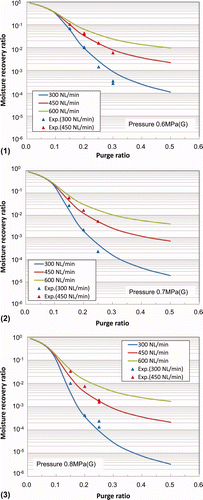
Figure 12. Axial distribution of moisture concentration inside and outside a hollow-fiber membrane module at 0.8 MPa(G).
